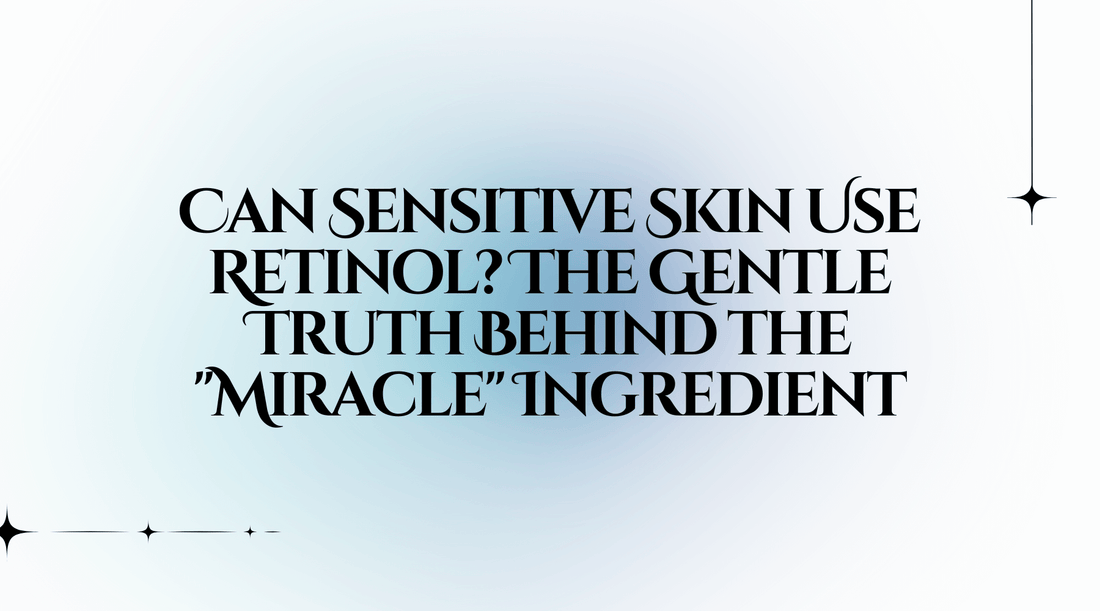
Can Sensitive Skin Use Retinol? The Gentle Truth Behind the "Miracle" Ingredient
It started with a single patch of dry, flaky skin under her eye. After weeks of scrolling skincare blogs and watching TikTok reviews, Leah finally gave in to the hype and bought a popular retinol serum. She followed the directions—just a pea-sized amount, twice a week—but within days, her skin was red, tight, and stinging. Sound familiar?
If you have sensitive skin, you’ve likely heard both sides of the retinol story: the glowing transformations and the horror tales. So what’s the truth? Is this powerhouse ingredient really off-limits for delicate complexions—or could it be the moisturizing cream your routine is missing?
Let’s break it down.
What Is Retinol, Really?
Retinol is a type of vitamin A that’s long been praised in skin care for its ability to speed up cell turnover, reduce fine lines, fade dark spots, and unclog pores. It's a hero ingredient in many products marketed as the best face moisturizer or best under eye cream. But here's the catch: traditional retinol can be intense—especially for those with sensitive skin.
Enter: Retinyl Palmitate.
This gentler cousin of retinol is often found in natural skincare products like Thentix Skin Conditioner, and for good reason. Retinyl palmitate is converted by your skin into retinoic acid, the active form of vitamin A, through a slower process. That means it’s less likely to cause irritation, dryness, or peeling.
Why Retinyl Palmitate Works for Sensitive Skin
If you’re looking for the best moisturizer for dry skin that won’t make your face feel like it’s on fire, retinyl palmitate might be the answer. Here’s why:
- It’s gentler than traditional retinol: Because it goes through multiple conversion steps, it works more gradually and is less irritating.
- Perfect for beginners: Ideal if you’re new to retinoids and want to ease into the benefits without risking flare-ups.
- Supports hydration: Often combined with emollients and humectants, it pairs well with ingredients in moisturizing cream formulas to help prevent dryness.
- Still delivers results: Over time, you can expect improved texture, fewer fine lines, and a more radiant look—without the harsh side effects.
How to Introduce It into Your Routine
Whether you’re using a face cream for dry skin or searching for the best under eye cream, look for products that include retinyl palmitate alongside soothing, hydrating ingredients like honey, aloe vera, and natural oils. Thentix Skin Conditioner, for example, is a natural skincare staple made with retinyl palmitate and formulated to be gentle enough for daily use—even on compromised or dry skin.
A few tips:
- Start slow: Even gentle retinoids should be introduced gradually. Try 2–3 times a week at night.
- Moisturize generously: Always follow with a nourishing moisturizing cream to protect your skin barrier.
- Use SPF daily: Retinoids, even mild ones, can increase sun sensitivity. A broad-spectrum sunscreen is non-negotiable.
Bottom Line
If you have sensitive skin, you don’t have to miss out on the benefits of retinoids. While traditional retinol can be too much for some, retinyl palmitate offers a gentle, effective alternative that fits beautifully into a natural skincare routine.
So the next time you shop for the best face moisturizer or best moisturizer for dry skin, look for one that combines hydration with a touch of vitamin A magic.
Because who says sensitive skin can’t glow, too?
Ready to give retinoids another chance?





 https://thentix.com
https://thentix.com